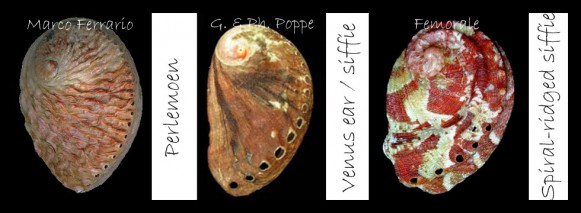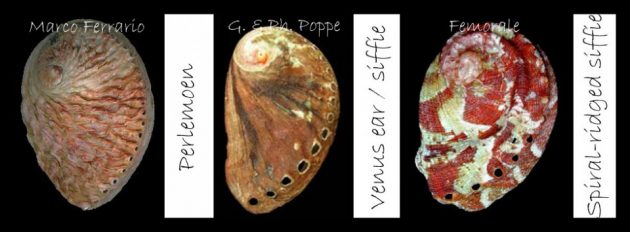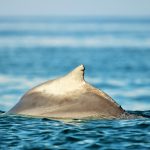Not one, but three, abalone species in Plettenberg Bay!

If someone mentions abalone, it brings to mind one specific marine gastropod mollusk (sea snail) species Haliotis midae, also known as perlemoen. In fact, in Plettenberg Bay, there are 3 abalone species living in intertidal and subtidal waters. The most well-known abalone species is perlemoen, while the species most often found washed up on beaches is the venus ear or siffie (Haliotis spadicea), and the third abalone species is the spiral-ridged siffie (Haliotis parva). Abalone shells are a flattened open spiral with a row of small respiratory holes along one side. As the shell grows to accommodate the creature beneath new holes are formed and the old holes are filled in. The number of holes open at a time is dependent on the species, and is between 4 and 10. The design and colour of the shell is also species dependent, while the inner layer is made of nacre, or mother-of-pearl. Abalone are herbivorous and feed on a variety of seaweeds and algae. Like fish, abalone have gills which water enters from the front of the shell, and then the water exits through the respiratory holes in the shell. Eggs and sperm are also released into the water column for external fertilization through the respiratory holes. Both perlemoen and venus ear are collected as food, but the perlemoen is under particular pressure from poaching with populations being overexploited and highly threatened.
Species descriptions:
- Perlemoen has a large and heavy shell with an uneven surface showing raised ribs primarily along the growing front edge of the shell. It is pale pink in colour. Perlemoen grow up to 19 cm and only reach sexual maturity after 8-10 years.
- The venus ear or siffie is a smaller abalone species, with a smooth upper surface which is a blotchy reddish-brown colour, with some creamy patches. Venus ears grow up to 8 cm in size.
- The spiral-ridged siffie is the smallest of the three abalone species that occur in Plettenberg Bay, reaching a size of 4.5 cm. As the name suggests, there are ridges on the shell which follow the spiral shape of the shell. The colour is rather variable with a mottled reddish-brown and cream which, sometimes moves to orange, shell.
Written by: Minke Witteveen
For further reading:
- Branch, G.M., Griffiths, C.L., Branch, M.L. and Beckley, L.E. 2010. Two Oceans: A guide to the marine life of southern Africa. Pp. 132. Random House Struik Publishers, Cape Town.
- Wood, A.D. and Buxton, C.D. 1996. Aspects of the biology of the abalone Haliotis midae(Linne, 1758) on the east coast of South Africa. 1. Feeding Biology. South African Journal of Marine Science 17: 61-68.
- Wood, A.D. and Buxton, C.D. 1996. Aspects of the biology of the abalone Haliotis midae(Linne, 1758) on the east coast of South Africa. 2. Reproduction. South African Journal of Marine Science 17: 69-78.



